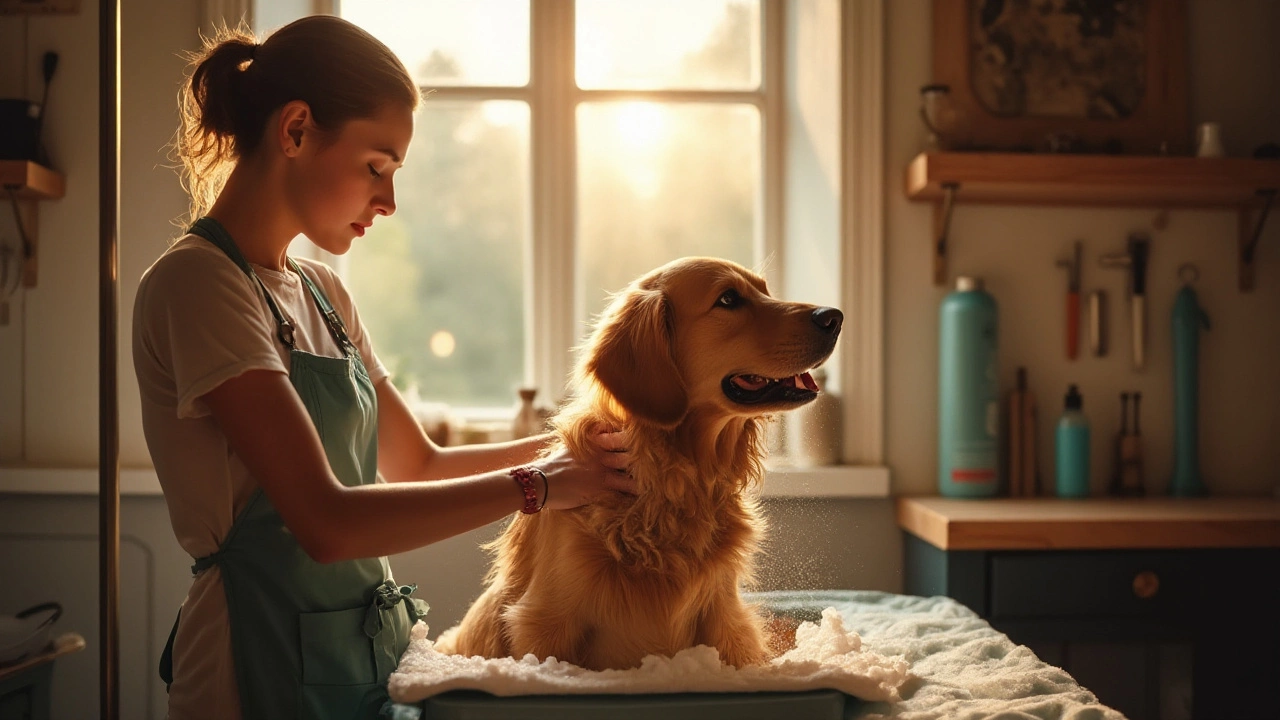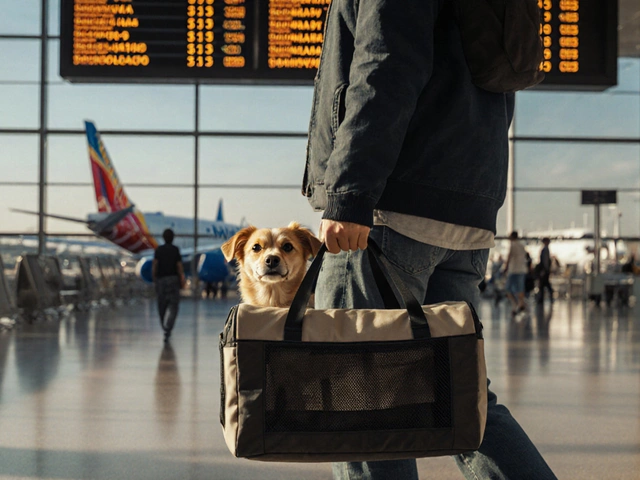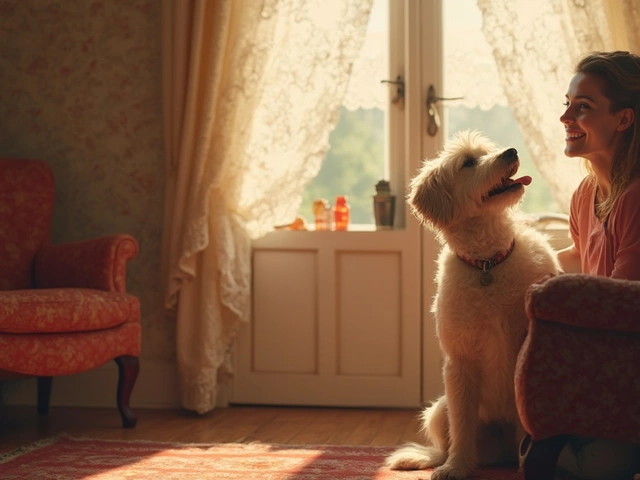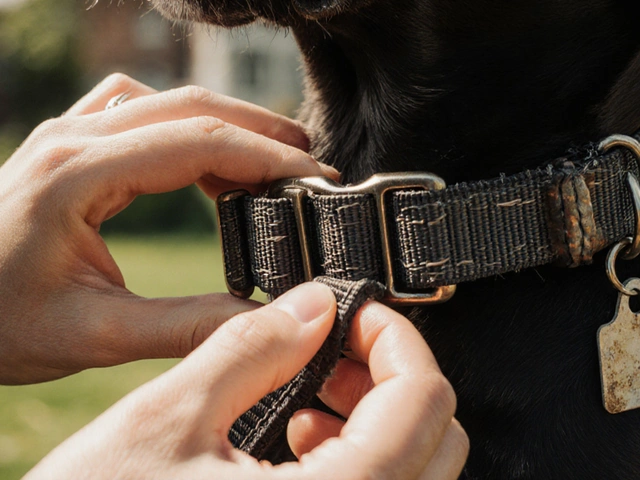Grooming your dog is about more than just keeping them looking their best; it's an essential part of their health care routine. A full dog grooming session can help prevent illness, manage fur shedding, and make sure your four-legged friend is as comfortable as possible. Whether your dog is a fluffy Pomeranian or a sleek Greyhound, understanding what a complete grooming service entails is crucial for both you and your pet.
Engaging in regular grooming can help you detect early signs of health issues like lumps or skin irritation. It's also a fantastic way to bond with your pet, making them feel valued and loved. But what exactly should you expect when opting for a full dog grooming session? All dogs are not created equal, so their grooming needs might vary depending on their breed, coat type, and health conditions. Dive into the essentials of what makes up a full grooming experience and pick up a few tips that might just transform grooming time into quality time with your pup.
- Introduction to Dog Grooming
- Bathing and Fur Care
- Nail Clipping and Paw Care
- Ear and Eye Cleaning
- Dental Hygiene for Dogs
- Choosing the Right Groomer
Introduction to Dog Grooming
For many, the image of a perfectly groomed dog is not just comforting but a testament to love and care. Dog grooming isn't merely about aesthetics; it's about ensuring a comprehensive care regimen that helps maintain your furry friend’s happiness and health. When you picture huskies with their majestic coats or poodles with their iconic trims, you’re seeing the artistry of regular grooming. Yet, beneath these charming exteriors lies the necessity and practicality of grooming, which is crucial for any pet owner committed to their pet's well-being.
Dogs have different needs depending on their breed, size, and coat. A short-haired breed like a Beagle may require less frequent trips to the groomer compared to a double-coated breed like a Golden Retriever. Dog grooming encompasses a wide range of services, each tailored to the specific requirements of a particular dog. These services might include bathing with specially formulated shampoos, which not only clean but also help in managing skin conditions that some breeds are prone to. Regular brushing is vital too—effective in decreasing shedding and preventing mats that can be uncomfortable for dogs.
According to the American Kennel Club, “Grooming is an essential part of dog care, no matter the breed.”
It's not just professional advice; seasoned dog owners agree that regular grooming can stave off potential health issues caused by dirt accumulation, pests, and excess hair shedding. A groomed dog is indeed a happy and healthy dog.Grooming often includes nail clipping, an area that often stresses out pet owners. However, keeping nails trimmed is important to prevent issues like splayed toes or even pain when walking. It's fascinating how dogs instinctively align to nail care when introduced to it early on. Many owners choose to seek out professional groomers who are not only adept in the skill but can handle their pet with care and gentleness.
Engaging with a skilled groomer can introduce you to the right techniques and tools required for maintaining your dog's specific grooming needs. There’s a sense of relief knowing that someone who understands the intricacies of pet care is handling your pet’s grooming needs. Groomers also have a keen eye for anomalies, such as skin disorders or unusual lumps, that could be early signs of health issues. This layer of observation contributes significantly to preventive health care for your dog. These grooming sessions are the perfect opportunity for pampering – and let's face it, who doesn't love seeing their dog spiffy and refreshed after a good grooming session?
Understanding the Basics and the Benefits
The first step often involves setting up a regular grooming schedule. Frequency varies, as mentioned, based on individual needs, but most groomers suggest a complete grooming every four to eight weeks. Depending on how fast your dog's nails grow or how often they play outside, the schedule might need adjustments. Common grooming services are tailored to bathe and clean your dog with utmost precision. They use safety-approved products specifically designed for canines, ensuring that even dogs with sensitive skin remain comfortable throughout.
One lesser talked about benefit of grooming is the positive impact it has on a dog's social behavior. Regular grooming and handling can significantly contribute to reducing anxiety around humans. Grooming rituals help them feel comfortable in situations where they are being examined or held. This aids not just their grooming experience, but improves their interaction with veterinarians and even with older children. Building such positive associations is paramount in nurturing a well-adjusted dog, contributing to its overall development.
Bathing and Fur Care
Bathing and fur care is the cornerstone of any dog grooming regimen, and it's much more than simply scrubbing a dog with shampoo. It's an opportunity to promote healthy skin, reduce odors, and keep mats and tangles at bay. Choosing the right shampoo is critical, as dogs have sensitive skin that can react poorly to harsh chemicals. That's why many groomers recommend pH-balanced products specifically formulated for canines. Bathing frequency varies by breed, with some dogs needing a bath every month and others with water-repelling coats, like the Newfoundland, requiring fewer washes. Bathing too often can strip natural oils, leading to dry skin, while under-bathing can lead to dirt build-up and potential infections.
Once your pooch is sufficiently damp, it's time to tackle their fur with a gentle conditioner that will detangle without leaving an oily residue. Different coat types require different techniques. For example, curly-coated dogs like Poodles benefit from a thorough brush-through during and after the conditioning to prevent tangling and matting. Meanwhile, short-haired breeds may need a rub down with a special mitt to help remove loose fur. Taking time to separate the fur and examine your dog's skin allows you to spot potential issues such as flea infestations or unusual lumps. One intriguing fact is that some dogs, like the Siberian Husky, possess a self-cleaning coat, which requires less grooming but more undercoat care especially during shedding seasons, known as 'blowouts.'
Drying is another critical step. Air drying might be suitable for smaller, short-haired breeds, but long-haired dogs require a good-quality blow dryer to prevent water tangling strands of fur, leaving room for mat formation. Using a dryer with different temperature settings is advisable to avoid scalding their delicate skin. Brushing during the drying process not only detangles but also helps remove dead hair. According to Dr. Melissa Byers, a trusted veterinary dermatologist, "Choosing the right brush can make a significant difference—bristle brushes work wonders for smooth coats, while wire pin brushes suit long-haired breeds." Through careful grooming, the coat becomes a window into your dog's wellness, and regular care helps you notice when shifts in diet or supplements are needed to maintain a luxurious and healthy coat.
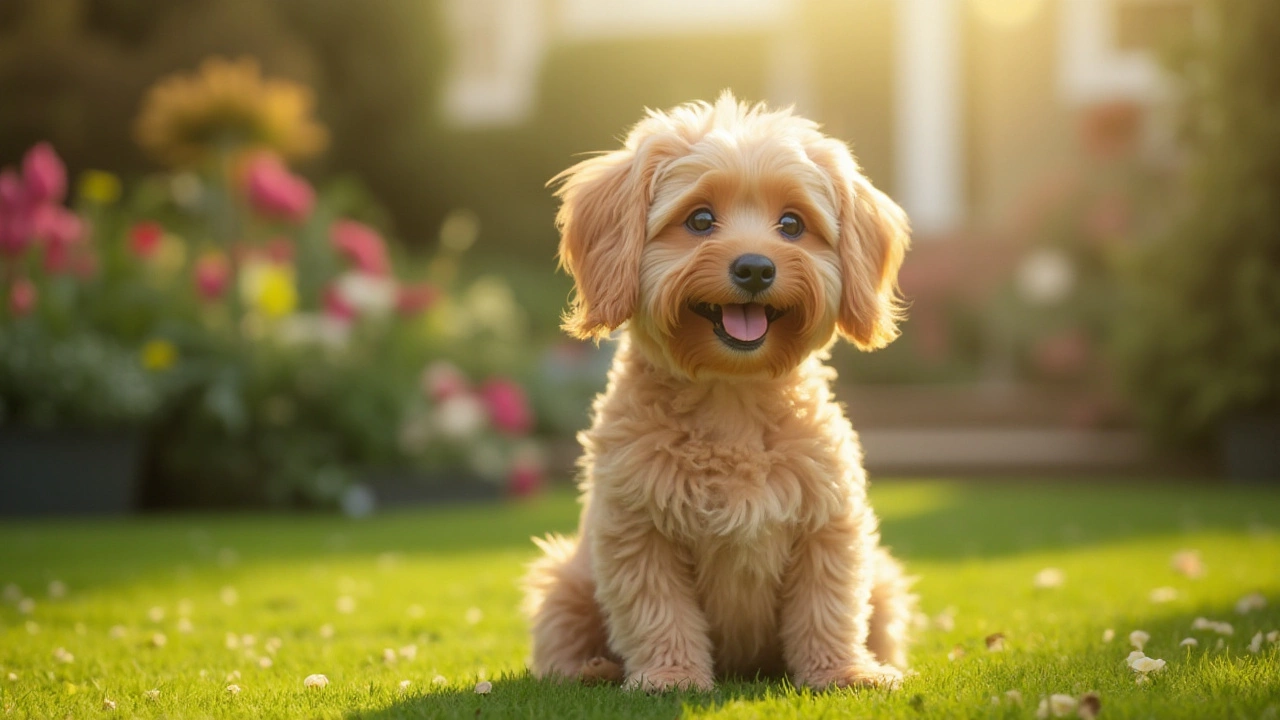
Nail Clipping and Paw Care
Nail clipping might seem like a small part of the grooming process, but it’s actually essential for maintaining your dog's health and comfort. Overgrown nails can cause a myriad of issues like discomfort while walking, and they can even lead to more severe paw problems. Dogs need their nails trimmed regularly, though the frequency can vary greatly depending on the breed and how active they are. Indoor dogs or those who walk on soft surfaces may need more frequent clippings than those that are active on hard surfaces, which naturally wear down nails. It's important to check your pet’s nails often, as too-long nails can even lead to posture problems or joint pain in the long run. Accustoming your dog to nail trimming at a young age can ease this often-nerve-wracking process for both pet and owner.
One area that dog owners sometimes overlook is the condition of the paw pads. These pads act as shock absorbers for your dog’s joints and are also an important barrier to extreme temperatures and rough terrain. Regular inspection is crucial, and gentle cleaning with a damp cloth can help remove any debris. Keep an eye out for any cracking or redness, as these can be signs of injury or infection. Moisturizing paw pads with a vet-approved balm is something to consider, particularly during harsh weather conditions. In terms of clipping your dog's nails, high-quality clippers are key. There are a variety of styles available, such as guillotine-style or scissors-type clippers. If you’re unsure how to begin, consult your veterinarian or a professional groomer for a demonstration. Taking care of your dog's paws and nails isn’t just about aesthetics—it’s a step toward ensuring their comfort and happiness.
Nail trimming sometimes gets overlooked, but it's a job best done carefully. Each nail contains a blood vessel known as the "quick." Cutting into this can be painful for your dog and may even result in bleeding, so awareness and attentiveness are vital. Aim to trim just a little off the end each time. If you're unsure, it's always better to trim too little than too much. Did you know that black nails are tougher to see the quick in than clear or white nails? That’s another reason why being cautious can't be stressed enough. As Jack Sanchez, a renowned dog care specialist, once said,
"Regular paw and nail care prevent many walking issues later on. Proper grooming today saves a multitude of paw-seeking asking tomorrow."Taking it slow and offering treats to reward calm behavior can help create a less stressful environment during the grooming process. Treat your dog with care, and they’ll associate grooming time with positive experiences.
Ear and Eye Cleaning
Proper ear and eye care is a vital component of dog grooming, ensuring your furry friend's comfort and preventing infections. Dogs use their ears for much more than hearing; they also serve as a window into their well-being. Ear cleaning helps in preventing ear infections, common in breeds with floppy ears as moisture and debris can easily accumulate. Cleaning the ears is about inspecting them for any unusual smells or discharge and gently wiping them with a vet-approved solution. Regular ear checks can nip problems in the bud, saving your dog from discomfort and you from potential vet bills.
When it comes to eye care, maintaining the cleanliness around your dog's eyes is essential. Tear stains, especially in lighter-colored breeds, are more than just an optical annoyance; they can indicate underlying health issues. Wiping away any discharge with a damp, soft cloth helps prevent irritation and infection. It's important to remember never to use any products not specifically designed for dogs. The delicate tissues in your pet's eyes can react negatively to human products. Here's a quick tip: when cleaning your dog's eyes, offer a treat afterward. This positive reinforcement makes them more comfortable and cooperative during these grooming sessions.
If you're unsure about which products to use, consulting your vet is a good starting point. They can recommend solutions tailored for pet care. Some owners might opt for professional grooming services to handle these delicate tasks, especially with breeds prone to eye and ear issues. According to a report by The American Kennel Club, regular cleaning can significantly prolong a dog's healthy years, making it an invaluable part of routine grooming. "A dog's health is often reflected in their ears and eyes," notes Dr. Emily Horne, a renowned veterinary dermatologist.
"Consistent grooming not only fosters comfort but also empowers dog owners to detect health anomalies at their inception."
For those who prefer a hands-on approach, gathering the right tools is crucial. Various products, like ear cleaning solutions, round-tipped scissors for trimming fur around the eyes, and soft cloths, are available both online and at pet stores. If you're planning to do it yourself, ensure a calm environment to avoid making your dog anxious. Keep essential oils and other aromatics away from your dog's face, as they might lead to irritation. Engaging in small talk or humming a soothing tune can make the process more pleasant for your companion.
Moreover, data from a survey conducted by PetCare Weekly suggests that 68% of dog owners reported reduced visits to veterinary clinics due to implementing consistent ear and eye cleaning routines at home. Here's a straightforward checklist to make sure nothing is overlooked:
- Inspect ears and eyes weekly for any signs of infections, such as redness and swelling.
- Use only products specifically made for dogs.
- Keep grooming sessions short and rewarding.
- Seek professional help if uncomfortable or if any issues are found.
Thus, regular cleaning not only boosts your dog's health but also strengthens the bond you share with them. As you cater to their needs, you're also observing and interacting, which makes spotting concerns in advance conceivable. Treat these moments as a bonding session as well as a health check, gradually instilling a grooming routine that becomes a cherished part of your pet's life.
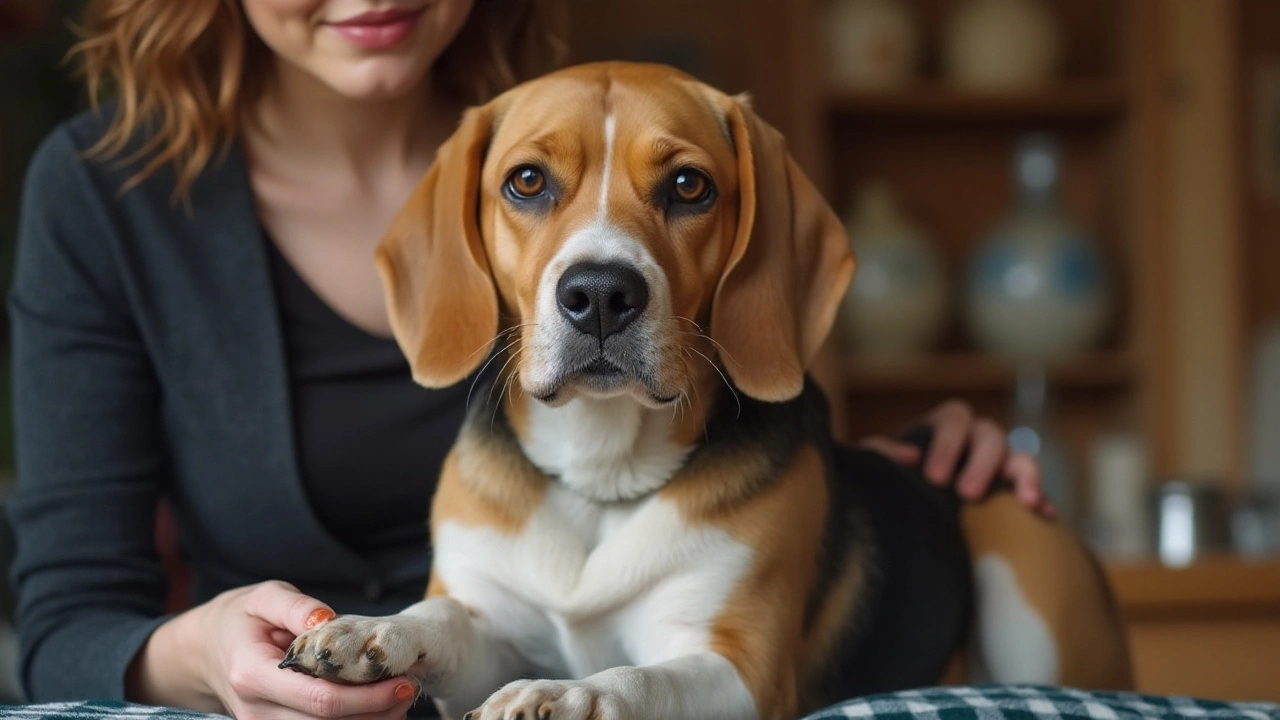
Dental Hygiene for Dogs
Ensuring proper dental hygiene for your dog is a crucial component of their overall health, yet it is often one of the most overlooked aspects of dog grooming. Much like in humans, poor dental care can lead to a myriad of health issues in dogs, including gum disease, tooth decay, and even more severe systemic problems that can affect vital organs like the heart and kidneys. It's no secret that dogs use their mouths for practically everything, from eating to playing, and a healthy set of teeth and gums is essential for their day-to-day activities. Interestingly, according to the American Veterinary Dental Society, over 80% of dogs will have some form of dental disease by the age of three. This statistic underscores the importance of vigilant dental care.
Regular brushing is at the heart of maintaining good dental health in dogs. It's recommended to brush your dog's teeth at least two to three times a week, although daily brushing is ideal. Find a comfortable moment for you and your dog, perhaps while they're relaxed after a meal or following a play session. Use dog-specific toothpaste, as human toothpaste can be harmful to them. Selecting the right toothbrush is also vital; options vary from finger brushes to models specifically designed for large or small breeds. One effective technique is to start by letting your dog taste the toothpaste, then gently lift their lips and brush in a circular motion, paying special attention to the back teeth where plaque tends to accumulate.
In addition to regular brushing, providing dental-friendly treats and chew toys can significantly contribute to their oral health. These products are formulated to remove plaque and tartar, providing not just health benefits but also hours of entertainment for your dog. It's a win-win! However, always supervise them with new chew toys to ensure they don't swallow large pieces that could cause blockages. Also, periodic professional cleaning by a veterinarian is also recommended, usually annually, to tackle any buildup that home care might miss. Many vet practices offer special cleaning packages that can be tailored to match your dog's specific needs.
"The mouth is the gateway to the body and requires the same level of care that we provide for other parts of a dog’s health," says Dr. Julie Buzby, a leading authority in veterinary medicine.
Beyond brushing and treats, it's also essential to be vigilant for signs of dental issues. Bad breath is often the first indication that something might be amiss with your dog's oral health. Additional warning signs include red or swollen gums, excessive drooling, difficulty chewing, or reluctance to eat hard food, which might suggest dental pain. If your dog exhibits any of these symptoms, it's crucial to have them checked by a vet promptly.
| Service | Frequency | Goal |
|---|---|---|
| Brushing | Daily | Remove Plaque |
| Vet Check-Up | Annually | Comprehensive Exam |
| Dental Treats | Weekly | Maintain Cleanliness |
Dogs, much like us, benefit greatly from consistent dental care. By instilling a routine and being attentive to their oral health, you can extend their quality of life and keep that tail wagging for years to come. Remember, good dental care is a form of preventive healthcare that saves you from costly treatments down the road. After all, a happy dog is one with a clean, healthy mouth ready to kiss and smile its way through life!
Choosing the Right Groomer
When it comes to ensuring your beloved pet receives the best care during grooming, selecting the right groomer is paramount. A professional groomer not only transforms your dog's appearance but also guarantees their comfort and safety throughout the process. To start, consider asking fellow dog owners for recommendations. Word of mouth is often the most reliable source of information, giving you insights into the reliability and quality of service of potential dog grooming professionals. Additionally, take advantage of online reviews and ratings, as these can help you gauge the experiences of other pet owners with specific groomers or salons.
Once you have a list of potential groomers, it's critical to visit their facilities. Pay close attention to the cleanliness and overall organization of the salon. A clean, well-maintained environment is indicative of the groomer's attention to hygiene, which directly impacts your pet's health. Moreover, observe how the groomers interact with the pets and their owners. Are they courteous and patient? Do they establish a rapport with the animals? These attributes can significantly affect your dog's grooming experience, making the visit either a relaxing treat or a stressful ordeal.
Communicating directly with the groomer is another crucial step in making the right choice. Ask them about their experience and qualifications, and don't shy away from discussing your dog's specific needs, be it sensitive skin or a tendency to get anxious. A competent groomer will be knowledgeable and able to provide solutions tailored to your pet's unique requirements. It's also important to inquire about the grooming products they use. Make sure they use high-quality, pet-friendly products that won't irritate your dog's skin or coat. Remember, a good groomer is always transparent and willing to share their knowledge.
Trial Appointments and Building Trust
Before committing to a groomer, consider scheduling a trial appointment. It allows you to observe how they handle your pet and whether they meet your expectations. A trial session offers a perfect opportunity for your dog to get accustomed to the groomer, easing future grooming visits. Throughout the trial, pay attention to your pet's behavior and demeanor. Do they seem comfortable? Are they anxious or relaxed? These observations can help you determine if the groomer is indeed the right fit for your furry friend.
Building trust with your groomer is essential for both you and your pet. Regular communication will help resolve any concerns and ensure that your dog consistently receives excellent care. If you find yourself unsure, don't hesitate to ask questions or seek clarification. After all, a groomer's job is not just about giving your pet a good cut, it's also about ensuring their welfare during the grooming process. As a pet owner, it's your responsibility to advocate for your dog and provide them with the best possible care, making the decision of choosing a groomer one of considerable importance.

